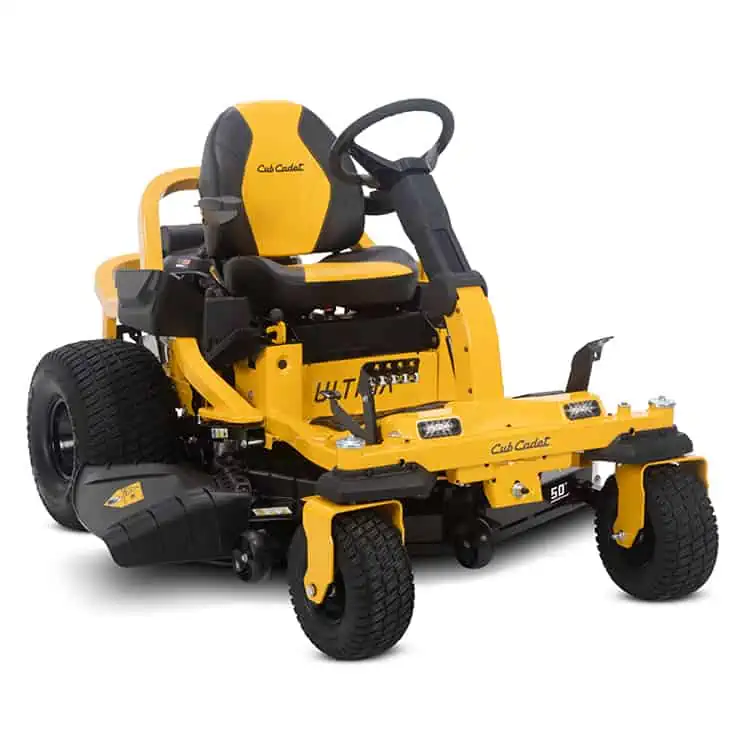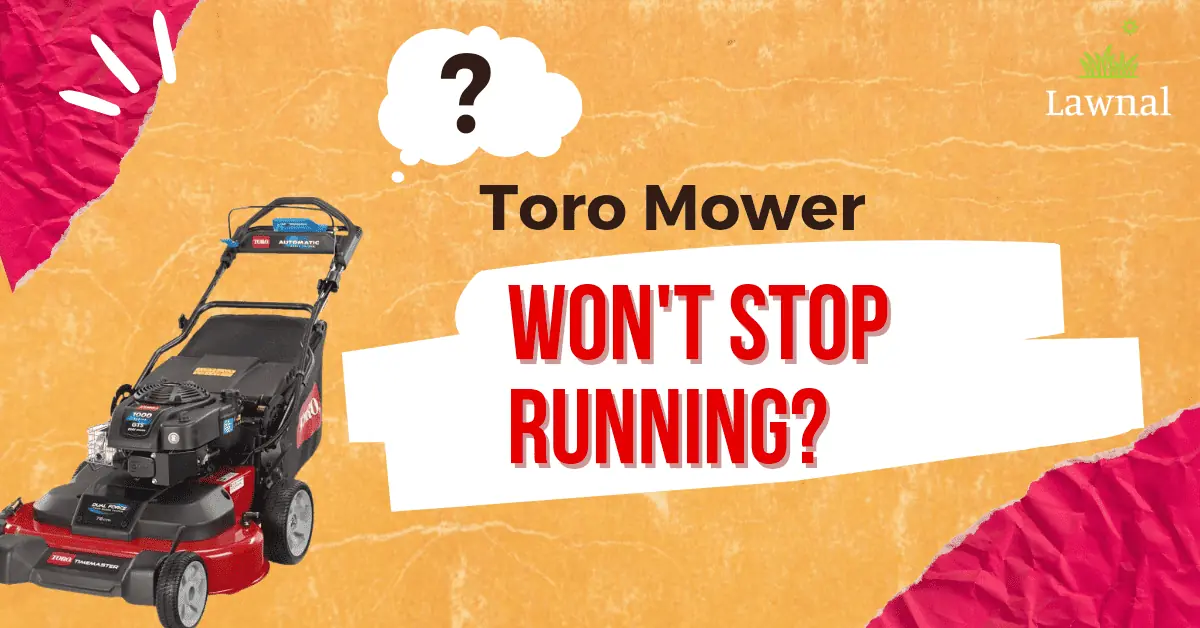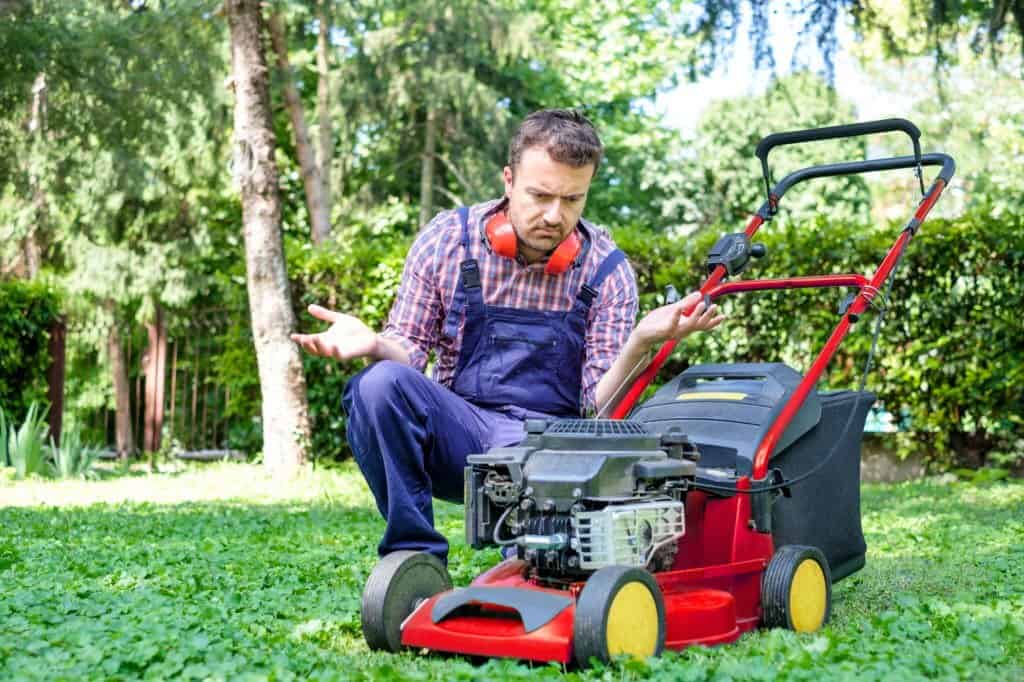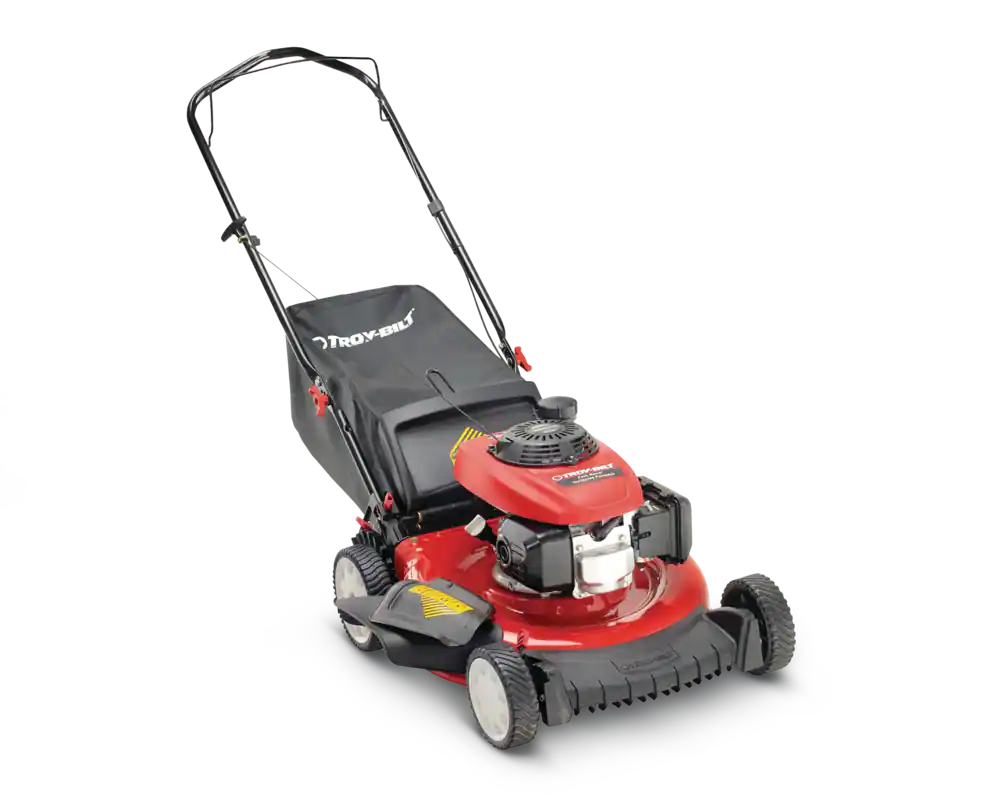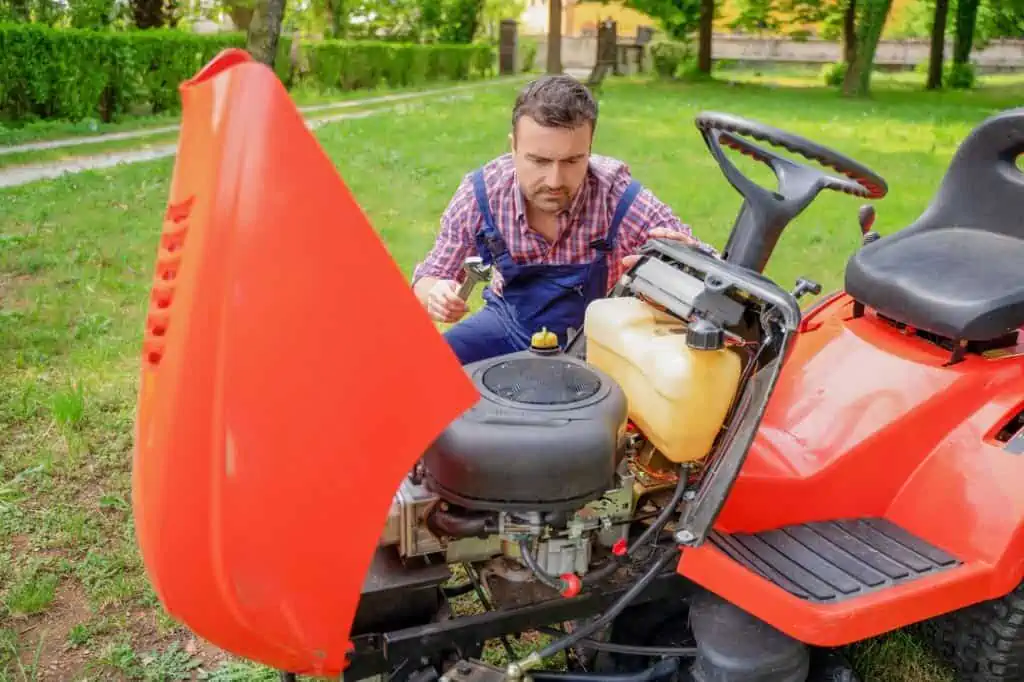You’re gliding over your lawn at almost full speed, but something is wrong with your mower. On one side, a problem needs urgent attention.
When a side on your zero-turn mower is weak, it will be immediately noticeable. That side will drag or slug along, common with zero-turn lawnmowers. It’s important to know what’s wrong and even more important to know where to look.
This article identifies common issues that make your zero-turn mower unstable and possible solutions. Read on to learn how to fix it like a pro!
Why Does a Zero-turn Mower Become Weak on One Side?
Firstly, unlike many mower designs in the industry, zero-turn mowers use two independent systems to power the drive wheels. As a result, either side of the drive system can fail, including the wheels. Attachments to the mower, like clipping bags and trailers, can also become unbalanced, leading to imbalances on one side.
Here are the primary reasons why your zero-turn mower gets weak on one side:
1. The Spline Gets Stripped
The spline is a key that fits into grooves in a wheel’s hub and shaft. Mostly. Splines created to integrate with the shaft that permits the wheel to move on the shaft can cause the problem.
In the zero-turn mower, you will find the spline on the pulley, which works on the speed and torque. That’s why, after a while, these little things get stripped. Weak splines mean one side of the zero-turn mower will not work correctly.
Fixing This Issue
You can take several steps to fix this issue and get the affected side of your mower working again. One of them is replacing the spindles. Here are steps to do this:
- Loosen three bolts with the 1/2-inch wrench to remove the mower deck spindle assembly cover, then remove the cover from the socket.
- Use a 1/2-inch wrench to remove the mower deck belt. If you want to loosen the tensioner pulley and lower the belt, a socket wrench and cheater bar will work perfectly.
- Lastly, use a 1-⅛-inch wrench to remove the nut on the top of the spindle’s spline using an adjustable wrench or socket.
2. Dragging Brake
If your mower comes with disc or drum brakes, your mower’s weakness on one side can be caused by one brake not releasing as cleanly as the other. Also, it can be caused by a frozen brake caliper.
For example, the piston might get stuck inside the caliper. As a result, many brake pads often get misaligned and stop working. Further, the slide pins on single-piston calipers can occasionally seize.
Fixing This Issue
Fixing this problem will require you to take out a tire to observe the brakes. You must use a specific tool to force and retract the pad for seized caliper pistons or sliding pins. Most people use a simple C-clamp to do that.
Further, the hydraulic pressure of the brake system can be used to dislodge a seized caliper piston. However, liberating a stuck brake does not guarantee it will not seize again.
The corrosion leading to the stuck device remains present, so it’s only a matter of time before it gets stuck again. A much better option is rebuilding the brake for less money.
3. A Displaced Freewheeling Rod
In zero-turn mowers, a hydrostatic unit is a sealed unit. The units are primarily separate and provide power to each side. However, a seal can blow, causing a leak. Additionally, owing to low fluid levels, both sides can get damaged.
A reason for this problem is the freewheeling rod partially failing. It is designed to work perfectly when thoroughly inserted.
Fixing This Issue
Observe the freewheeling rod on each side of your zero-turn mower. These are the rods you pull out to disconnect the hydraulic motors. Each side should have one.
While observing the hydraulic motors, check whether they feature more on the weak side. Also, observe both hydraulic motors. A single hydraulic tank feeds both pumps.
Further, check the fluid level and then the filter on the weak side. Note that each hydraulic pump has its filter. If you notice visible issues, then replace them first.
Next up, closely examine the pump. Each side has its pump. Besides, the valve system is strong enough and will not present any problems. Ensure the issues are not due to the disengagement lever.
4. The Tire Pressures Do Not Match
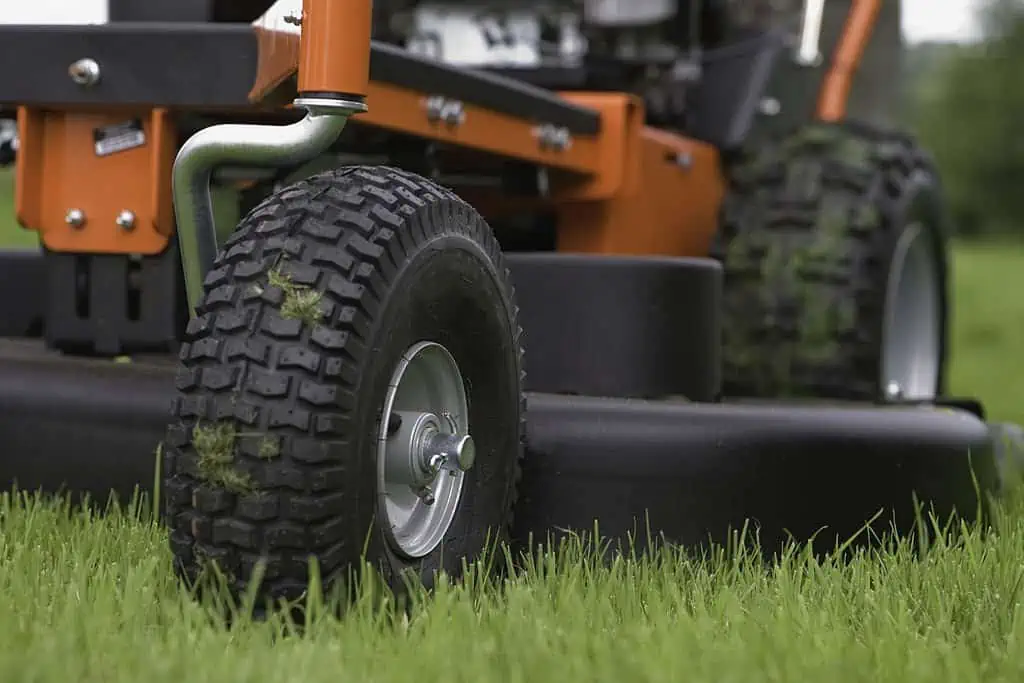
Even without a flat tire, the effects of uneven tire pressure can be felt immediately. Just enough difference in the tire pressure can cause one side of your zero-turn mower to drag.
Further, independent controls over the wheels will give you an idea of how either side of the mower performs, including responses to your movement. When you do that, it is easier to feel when the tire pressure doesn’t match.
To better understand the issue, park your zero-turn lawnmower on a level surface like your driveway and grab a tire pressure gauge. Check the sides of the tire to locate the max PSI, then compare it with your tire’s PSI.
Do this for all the tires to identify why the zero-turn mower feels weak on one side.
Fixing This Issue
Fixing this issue is one of the easiest things to do, even though many people don’t realize it or go ahead and do it. It would be best to have some tools to do it: a tire pressure gauge and a tire pump.
Test the four tire pressures of your zero-turn mower and inflate them to the recommended PSI. That gets your mower balanced and, at the same time, puts an end to uneven cuts and uncomfortable driving experiences.
5. Air Lock in the Hydrostatic Motor
While using your mower, you may experience cavitation of the hydraulic fluid used in the hydrostatic system. This is where the air in the fluid is generated. Once this air accumulates, it leads to an air pocket in the hydro system. When this happens in just one of the hydro motors of your mower, it can cause a lack of power to just one side.
To identify the problem, drive your mower on a flat surface at a low speed and observe how it feels as you increase it to a high speed. The effect worsens with increased power, depending on how bad the air pocket or airlock is. In line with that, if you feel it gets worse as you transition from low to high speed, it is undoubtedly an airlock problem.
Once the airlock gets too bad, the wheels will not turn.
Fixing This Issue
Air lock in the hydrostatic motor needs fixing, so you can follow the following steps to do so:
- Firstly, chock the front wheels to prevent the mower from moving, then jack up the back wheels off the ground a few inches.
- Release the hydro. You can find the hydro engagement rod on the rear or the zero-turn mower. Push/pull the rods on both drives to disengage them.
- Start the engine and increase the throttle to max RPM.
- Engage the forward drive and aim for maximum forward drive, then hold for some seconds. If the hydro were disengaged correctly, the wheels would not turn when you engage forward or reverse drive. If they turn, switch off the mower and correctly disengage the hydros.
- Engage in reverse drive and hold for several seconds. Move back and front a couple of times to enable the hydrostatic drive to bleed and remove air from the motors. Kill the engine when you finish.
- Lower your zero-turn mower and re-engage before applying the brake. Engage the hydros using the engagement rods and remove the chocks.
- Next, check the level of the hydro fluid. If it’s too low, add some hydro fluid. However, some hydros are sealed, so adding fluid is impossible. If your mower is like that, this step is unnecessary.
- Finally, it is time to test your zero-turn lawnmower. Take it out for a spin. Also, bleeding the hydro can take a couple of attempts, so you might need to repeat the process to remove every bit of air left behind.
Take time to perform these steps so that the issues are handled once and for all.
6. Traction Problems
The two motors on the zero-turn mower get tracked through handlebar movement, alignment, and limits. The tracking rod also connects to the hydrostatic motors. To that end, the left and right sides of the controls must mirror each other.
When either part of the mower takes up much of these functions, the mower will push towards the weaker side.
Fixing This Issue
You might need specifics on your mower model to help you get this right. So ensure you have an operator’s manual present. A zero-turn mower is already complicated, so adjusting the traction takes time.
To improve your mower’s traction in the future, try reducing tire pressure. Use larger tires and avoid abrupt turns or quick stops on sloppy areas like hills. Additionally, preventing mowing on damp grass and slopes more than 15 degrees should not be mowed.
Final Thoughts
Zero-turn mowers are designed to deliver more power than many regular four-wheeler mowers in the industry. They’re very effective and efficient at what they do. That’s why you must maintain them with the best industry standards. One major problem that can affect them is getting weak on one side.
Zero-turn mowers can develop traction adjustment problems, irregular tire pressures, splines, etc. Thankfully, this article has provided the best solutions to why your zero-turn mower is weak on one side. Now that you know this, you can carefully observe and test your mower to identify and solve the problem.
If it proves too much to accomplish, hire a professional.

